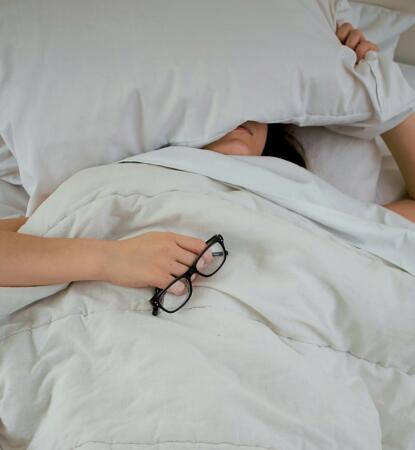Studying in college can be frustrating, both emotionally and physically. Students have to work on so many things at the same time that late-night study sessions are inevitable. However, this often results in falling asleep in class and missing the important stuff, or figuring out late to class etiquette when they were absent. In this article, we will examine practical strategies and tips on how to not be tired in the morning and get through the day even if you didn’t get much sleep the night before.
How to Stop Falling Asleep in Class and Feel More Energized
We’ve all been guilty of falling asleep in class at least once. It can happen even to the best of us. However, there are certain ways you can train yourself to feel more energized even if you didn’t get enough sleep. Here are a few tips on how to not sleep in class and stay focused on the topic in question:
- Bring a bottle of water to class. Drink some water as soon as you start feeling like you are about to zone out. Cold water helps you stay focused. Not drinking enough can result in feeling tired all the time.
- Be active. Interact with your professor and classmates. Ask questions.
- Sit at the front of the class. Don’t know how to not be sleepy in class? Being closer to the teacher motivates you to stay fully concentrated and show that you are invested in what’s going on.
- Bring chewing gum to class. While chewing gum in class may sometimes be considered rude, you can resort to this method if the situation is dire. Chewing activates specific regions of your brain and signals it to stay awake.
- Take notes or doodle. Doing so keeps you active and helps you feel more awake.
How to Wake Yourself Up During Class
Staying and studying awake is extremely difficult after you’ve pulled an all-nighter (or partied too hard). If you feel like you are about to fall asleep, sit up straight and make sure to keep good posture. Slouching often leads to falling asleep because your body takes in 30% less oxygen than usual. Another great idea is to move your body a bit. If possible, ask your teacher if you can change seats. Even though it may sound like a wild idea, we’re certain that your teacher won’t mind if you explain that you had a rough night and don’t know how to feel more awake during class.
The Best Ways to Wake Yourself Up When You’re About to Zone Out
Dozing off? Can’t sit straight and need a working strategy to feel awake? Check out the tips below on how to not be sleepy in class.
- Drink coffee. Get a cup of coffee before class and take a sip every time you feel sleepy. Caffeine leads to higher spikes in energy and helps you stay awake longer.
- Get some fresh air. If possible, ask to go outside for a few seconds and breathe some fresh air. This will deliver more oxygen to your system and force you to wake up.
- Bring an energy drink. While we advise you to consume energy drinks responsibly, having one when you desperately need to feel awake is totally fine. Such drinks contain high amounts of sugar and caffeine and boost your system enough to stay awake.
- Use a buddy system to stay awake. Sit near someone who doesn’t struggle with falling asleep in class and will poke you whenever you start dozing off.
If you’re feeling sleepy in class one of the best ways to stay awake is to get involved in the material, like doing a thorough literature review on the topic. A good literature review not only helps you understand the topic better but also keeps you focused and alert. But when time is tight or the topic is tough, using a literature review writing service can save you time and get you expert level insights in your field of study.
These are especially helpful for students with multiple responsibilities or studying a new field. By using professional help you can make sure your literature review is thorough, well organized and ready for class discussions. When you feel confident and prepared you’ll find it easier to stay awake in class and turn a boring experience into an active learning and engagement.
How to Stay Awake When Tired: The Best Solutions
There are a few things you can do when you need to stay awake, regardless of how tired you feel. While we can’t teach you how to not be tired in the morning when you don’t get enough sleep, there are things you can do to remedy the situation. To begin with, take frequent breaks during your day to keep your energy levels up. For instance, stretch your legs or get a snack. Another great way to stay awake is quite obvious — consume caffeine. It’s the best way to stay alert when you need more energy. If possible, take a quick nap to recharge your batteries. Short power naps significantly improve memory and learning skills. Exercising is another practical solution when you’re feeling drowsy. It stimulates the production of endorphins that lift your spirits and help you stay focused on the task at hand.
How to Not Be Tired: Strategies to Follow

The main reasons you feel tired all the time are a lack of sleep, stress, poor diet, and lifestyle choices. Here are the best self-help tips on how to not feel tired all the time:
- Eat a balanced diet. Doing so will help you get enough nutrients to boost your energy levels.
- Exercise regularly. Regular exercise leads to high-quality sleep. As a result, you wake up feeling refreshed and ready to start your day. At least two hours of moderate-intensity exercise will be enough.
- Create a sleep schedule. Try to go to sleep and wake up at the same time every day. It will help you relax faster and wake up without feeling tired.
- Learn to relax and take care of your mental health. You can’t fall asleep when you’re feeling stressed. Find the most suitable coping mechanisms to go to bed with a clear mind so that nothing distracts you from getting enough sleep.
- Drink less alcohol. Even though alcohol helps you fall asleep, the quality of that sleep is way worse, causing you to feel tired the next day. Cut down on alcohol before bedtime to get a good night’s sleep and feel fully rested.
If you are tired all the time it might be worth considering how your academic load is affecting your energy. For example tackling complex assignments like capstone projects can be really draining. These big tasks take up a lot of time, effort and focus and leave students exhausted and struggling to stay awake in class. When faced with such challenges, getting capstone project help can be a lifesaver. Professional help allows you to manage your workload better and ensure your project is top notch.
By offloading some of the heavy lifting of your studies you can rest and recharge. This will not only improve your academic performance but also give you the energy to participate in class discussions and absorb new information. Remember your well being is just as important as your grades so don’t be afraid to ask for help when you need it.
What Is the Best Time to Sleep and Wake Up?
There are two primary factors to take into account in this respect: the amount of sleep you get and its consistency. Ideally, you should go to bed early and wake up early, too. However, we all know how unrealistic that sounds, especially for students. Try to fall asleep before midnight and get at least seven hours of sleep. It will help you feel refreshed and not feel tired all the time. Moreover, don’t forget about the importance of having a regular sleep schedule. Going to bed at approximately the same time each night is essential.
FAQ
Why am I tired when I wake up?
The main reasons students wake up tired are stress, staying up late, and a lack of a proper sleep routine. Students can’t go to bed at the same time every night because they have too many assignments to complete. This results in them having an irregular sleep schedule, having trouble falling asleep, and waking up tired.
How to stay awake while studying?
The best ways for students to boost their energy levels and stay awake include staying hydrated, taking notes to stay focused on the subject, drinking coffee, and going outside for short breaks to get some fresh air.
What to do if you’re bored in class?
If you are bored in class, there are a few ways to pass the time when the subject in question is not particularly interesting. You can doodle in your notebook, create a to-do list for the next day, organize your desk, read a book, solve a crossword puzzle, or try to practice meditation. Of course, you can always relax and think about what you are going to do during the next break. Alternatively, you could use the time productively by reviewing a term paper citation guide to brush up on proper referencing techniques for your next assignment.
Recommended reads





